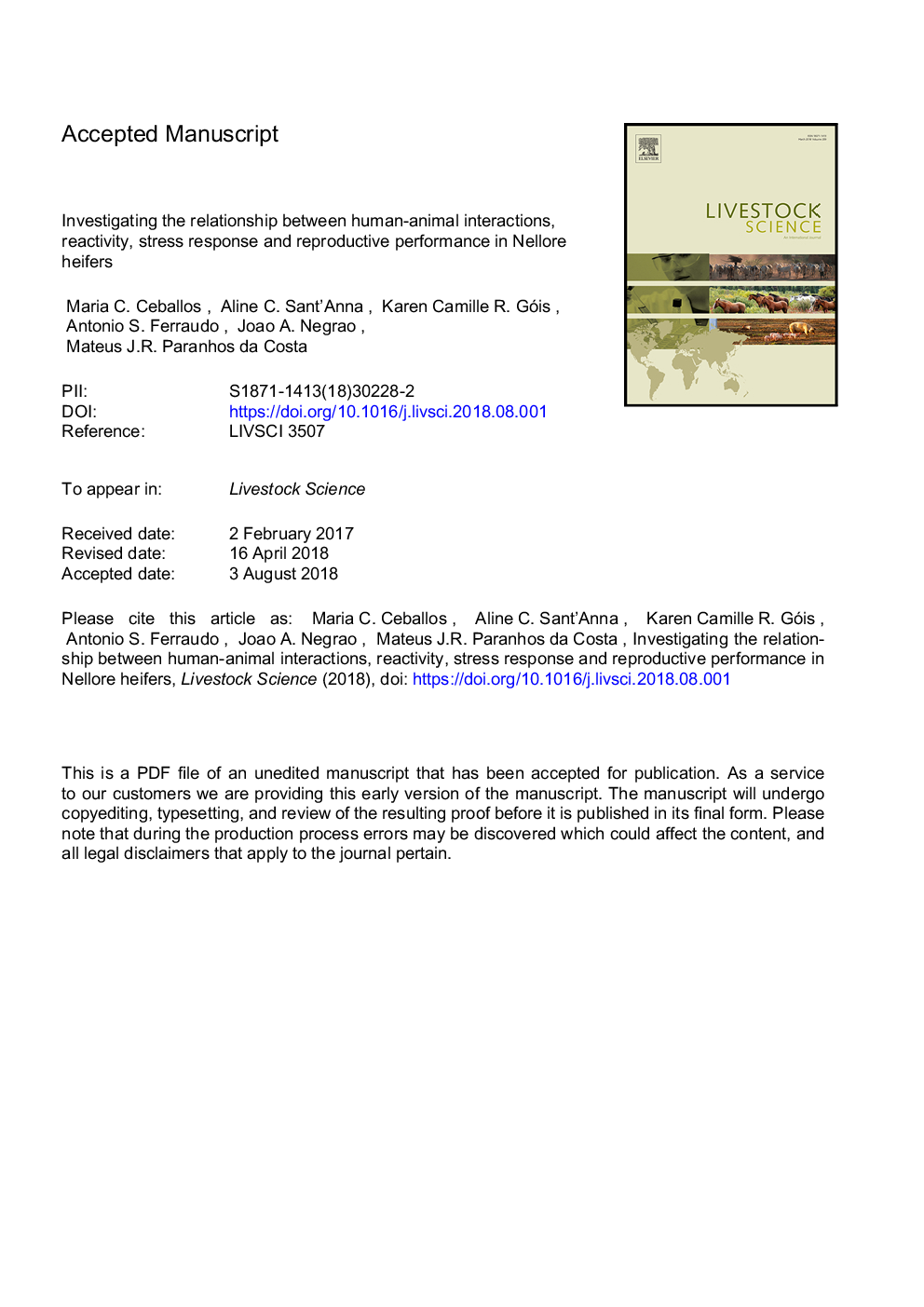| Article ID | Journal | Published Year | Pages | File Type |
|---|---|---|---|---|
| 11025848 | Livestock Science | 2018 | 46 Pages |
Abstract
The aim of this study was to further contribute to the understanding of the relationships between human-animal interactions, reactivity, stress response, and reproductive performance of Nellore heifers submitted to a fixed-time artificial insemination (FTAI) protocol. A sample of 571 heifers was used to assess two reactivity traits (flight speed - FS and the composite reactivity score - RS), five human-animal interaction traits (negative handling - NH, accidents - ACCIDENT, defecation-urination - DEF-URI, undesirable behavior - UB and entrance time - ET), and perineal region dirtiness - DIRTINESS. All variables were assessed on d0, d7 and d11 of a FTAI protocol. Additionally, two physiological indicators of stress (cortisol - CORT and neutrophil:lymphocyte ratio - N:L) were recorded in a subsample of 99 heifers on d0 and d11. To evaluate the relationships among all studied variables, we applied two different statistical approaches: a multivariate method (MCA, or multiple correspondence analysis) and linear models as confirmatory analyses. In the main data set, the MCA identified 13 correspondences, which we classified into two groups (undesirable vs. desirable aspects of the variables assessed). Another three correspondences were identified in the physiological data set: two indicated that the most reactive animals had the highest cortisol concentrations and the dirtiest perineal regions, and the other showed that animals that experienced negative handling displayed undesirable behaviors. Significant effects of FS (Ï2â¯=â¯7.30; Pâ¯<â¯0.05) and RS (Ï2â¯=â¯4.61; Pâ¯=â¯0.10) were found for the chances of a heifer getting pregnant, with lower chances of pregnancy for 'average FS and RS' heifers compared to the calmest and most excitable heifers, which did not differ between each other. Finally, heifers with a dirtier perineal region (higher DIRTINESS score) had lower chances of getting pregnant than cleaner ones (Ï2â¯=â¯6.75; Pâ¯<â¯0.05). We conclude that poor quality of handling is associated with higher animal reactivity, more undesirable behaviors and an increased risk of accidents. Although we did not observe a direct relationship between negative handling or heifer reactivity and pregnancy rates, we note that heifers that experienced negative handling were more reactive during handling as well as dirtier in the perineal region, which in turn was associated with lower pregnancy rates.
Related Topics
Life Sciences
Agricultural and Biological Sciences
Animal Science and Zoology
Authors
Maria C. Ceballos, Aline C. Sant'Anna, Karen Camille R. Góis, Antonio S. Ferraudo, Joao A. Negrao, Mateus J.R. Paranhos da Costa,
